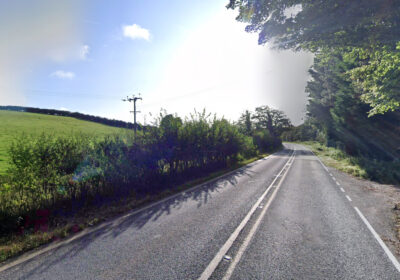How did Lucy Locket lose her pocket? The answer may lie in the newly acquired early Georgian provincial lady’s gown that has come to rest in Blandford Fashion Museum.
The gown, which became fashionable in 1790, was installed at Blandford Fashion Museum before the latest lockdown to an excited coronavirus-safe audience. The owner of the dress has changed its style in accordance with the fashion at the time. The front is from 1812 and incorporates designs from and earlier date including a train. There is an air of excitement at its acquisition, hence the departure from the usual practice of working behind the scenes.
Important were the undergarments beginning with a chemise and followed by a petticoat. Washable fabrics were just becoming available just as the first sewing machines appeared, between 1790- 1814. These durable and affordable fabrics became popular among the majority population, promoted in newspapers and magazines which conveyed new ideas as did dolls. Classical ideals were in vogue stressing the importance of ease, comfort and a ‘natural’ style.
This stunning gown has sleeves to the elbow (apparently a German influence) which was acceptable particularly for the ‘dinner hour’ when arms were revealed to a ‘graceful height above the elbow’. Importantly for “Lucy” there are slits each side to allow the wearer access to her waist tied ‘pockets’, which were small and often, embroidered with drawstring bags. These pockets were essential to young women particularly, many of which were making their way in the world and living in rented rooms. Keys, sewing materials, handkerchiefs and coins needed to be transported to keep them safe. The wearer of this dress was an ardent follower of fashion – despite living far from large centres of population.
The dress is made of brown cotton patterned with white and red stripes and blue flowers, utilising cream coloured Dorset buttons on the bodice and side openings.
In its new setting, together with a companion wearing a sumptuous coat dress, the model is seen making a “pocket” This is obviously to replace the one Kitty Fisher ‘found’ but “Not a penny was there in it”.
Carole Fornachon said: “I would like to say a very big ‘thank you’ for the two extremely interesting mornings I spent at Blandford Museum this month. And thank you for the coffee and cake too. I have learned a lot from the visits on several different levels, from when dress lengths changed in the early 1800s to how to mark a box to ensure it is one of the first removed from the building in the (horrendous) event of a fire. Stella passes on so much of her knowledge, which is very generous of her, and I can begin to appreciate how much time, effort and love for the museum all of the volunteers give and have.”
Support Us
Thank you all so, so much for the love and appreciation you’ve shown us since we launched the New Blackmore Vale.
Please show your support and add a review on our Facebook page or on Google.









Leave a Reply